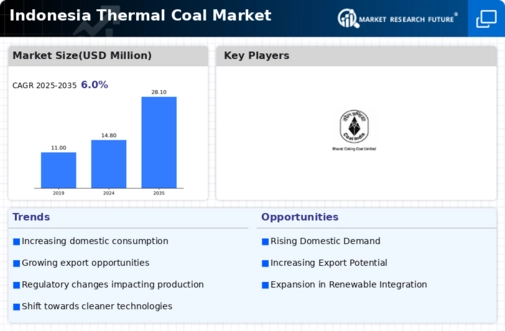Market Share
Indonesia Thermal Coal Market Share Analysis
The dynamic Indonesia Thermal Coal Market makes market share positioning tactics crucial to industry success. Indonesia's thermal coal business, one of the world's top producers and exporters, requires strategic positioning for sustainable growth. Companies in this sector use several ways to compete.
Companies first focus on cost leadership to gain market share. This involves optimizing production, increasing efficiency, and lowering costs without compromising coal quality. Cost leadership allows organizations to offer competitive prices, making their products more appealing. Investing in technology and infrastructure boosts productivity and lowers manufacturing costs.
Differentiating thermal coal products from competitors is another important strategy. This might mean supplying coal with more energy or lower sulfur content to meet environmental standards and customer preferences. Differentiation includes excellent customer service, on-time delivery, and strong buyer relationships. Companies can charge premium prices and build brand loyalty by distinguishing themselves.
Players in the Indonesia Thermal Coal Market also use market segmentation. Companies customize their products and marketing to different client segments' requirements and preferences. This lets them tailor coal solutions to certain sectors, locations, or customers. Understanding segment requirements helps organizations maximize market share in each specialization and overall market presence.
Thermal coal markets increasingly value collaboration and strategic collaborations. Companies regularly partner with mining contractors, logistical providers, and infrastructure developers. Companies can increase supply chains, operational efficiency, and market reach through these agreements. Joint ventures and partnerships promote innovation and sustainability by sharing knowledge and technology.
Environmental sustainability is becoming a key market share driver in Indonesia Thermal Coal. Global knowledge of climate change is driving demand for cleaner, more sustainable energy. Companies that invest in cleaner technologies, implement reclamation programs, and follow strict environmental standards can improve their reputation and attract more customers, including those with sustainability goals.






Leave a Comment